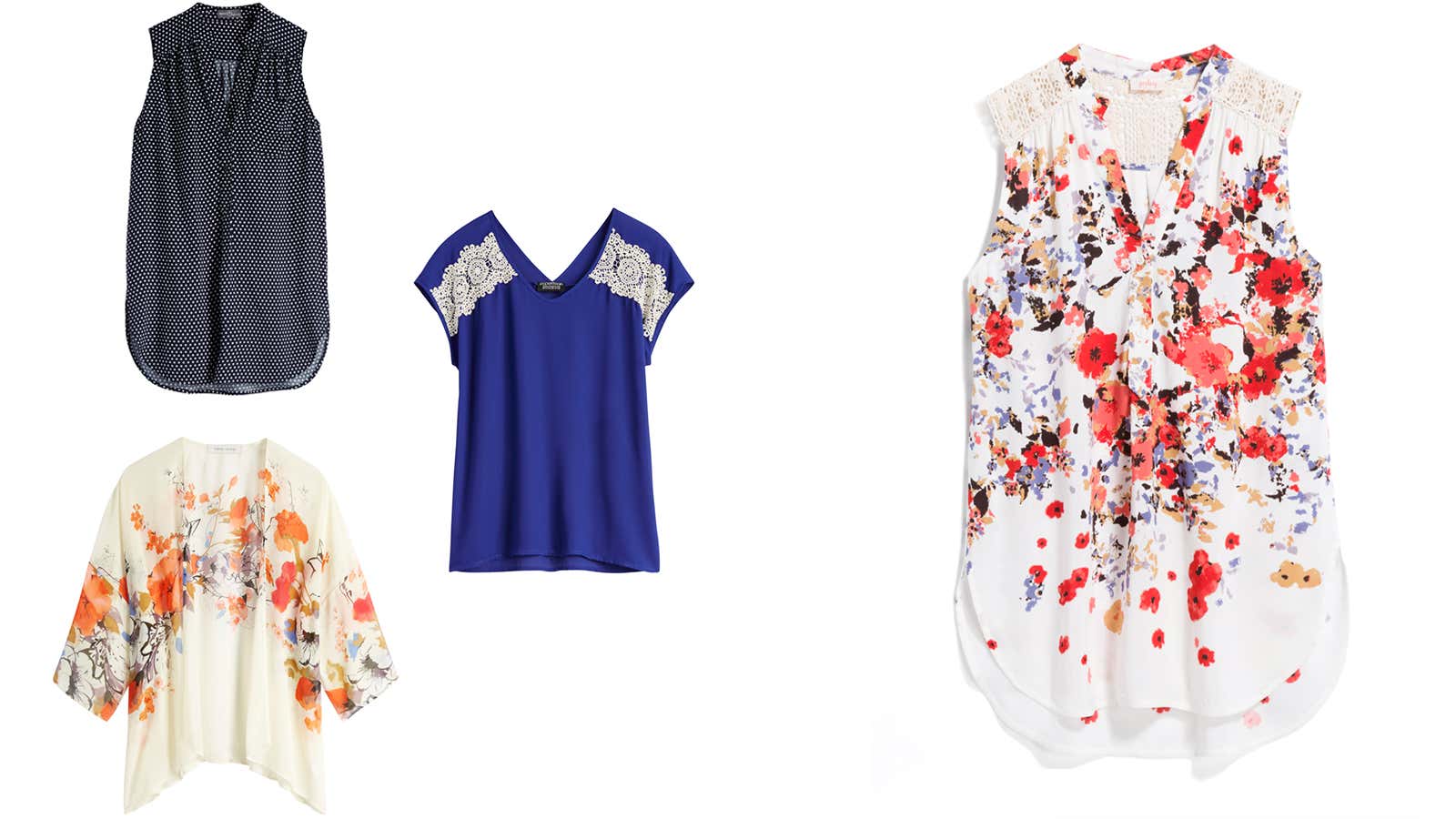Traditional clothing designers might start the creative process with mood boards and sketches, but Hybrid Designs starts with AI.
The in-house brand of subscription fashion startup Stitch Fix, Hybrid Designs employs a data science team that works with the company’s order data to predict which clothes customers will want to wear. The team identifies viable gaps in the company’s inventory—clothes that people would buy but a designer hasn’t made yet, says Stitch Fix chief algorithm officer Eric Colson.
“If we could be accurate enough to buy and hold inventory, could we be accurate in what isn’t available to buy, what doesn’t exist?” Colson asked. “Now when something is ostensibly missing from the market, we fill it in with our own algorithmically generated designs.”
It works like this: A collection of three algorithms generate a starting point. The first algorithm picks three “parents,” recommended pieces of clothing that could be either combined or used as a template for a new piece. The second suggests three different attributes that have been shown to compliment the parents’ style—maybe a different neckline or sleeves. And the third throws in a little bit of randomness, a suggestion that isn’t typical for the previously suggested style but might be interesting. Together, these algorithms search through a space of 30 trillion potential combinations of, for example, blouse attributes, to ultimately give just nine suggestions.
But while algorithms generate the initial ideas for Hybrid Designs, they aren’t responsible for the entire process, says Stitch Fix’s data science manager, Daragh Sibley. Human designers still arrange the algorithms’ suggestions into a garment that someone would want to wear. In other words, software might be able to make a mathematically perfect piece of clothing, but it still can’t evaluate the cultural context that makes said piece fit (or not fit) into this season’s fashion zeitgeist.
Sibley and his team aren’t the only ones trying to crack fashion algorithmically. One of Amazon’s latest Echo products, the Look, analyzes its owner’s outfits and judges whether they worked, kind of like an instant second opinion. Though it’s worth noting that Amazon, for all its data, also still uses humans to judge whether your outfit is “everything rn.” (That is, I have heard, what the kids say.)
After five years in business, Stitch Fix has already captured more than 3% of online apparel sales among millennials—edging ahead of retailers like Asos—and has reportedly broken $500 million in revenue. Hybrid Designs launched its first three pieces, all blouses, in June 2016, and has gone on to make about 20 other designs. Stitch Fix says some of them have performed in the 99th percentile for the site’s entire inventory.
“We can represent, minimally, 30 trillion different blouses, so the space of possible blouses is gigantic,” Sibley says. “I would posit that humanity has made less than a million blouses.”
